Pool filters: types, tips for choosing and using

In order for the water in the pool to be clean and fresh, thereby giving pleasure to the swimmers, a filtration system is necessary. In the absence of filters in an artificial reservoir, the water will be cloudy, sometimes green or with a white bloom. For this reason, every pool owner must select and install a good filtration system, as this, in turn, will extend the life of the reservoir, as well as save finances for disinfection.
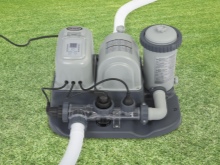
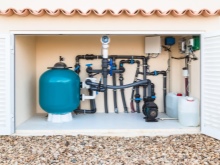
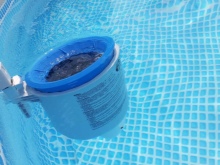
Pool water filtration methods
Constant water circulation and the use of filtering installations are the key to the high-quality functioning of an artificial reservoir. Filtration units with pumps can work on two principles: filtration and regeneration. The quality of purification is influenced not only by the type of installation, but also by the speed of the filtration process. High quality water treatment is ensured at a low purification rate.
In the overflow basin, the water that has poured into a special drain is sent to the tank. And already from the latter it goes to the filters. After cleaning, water enters the bowl through the hole on the bottom.
In the skimmer pool, the pump sucks in water through a special opening located below the water level. The filtering procedure also takes place there.
Coarse dirt is deposited in the filters and removed by water, which is supplied by the intake hole in the pool. The return of clean water occurs through the holes that are located on the wall opposite to the skimmers.
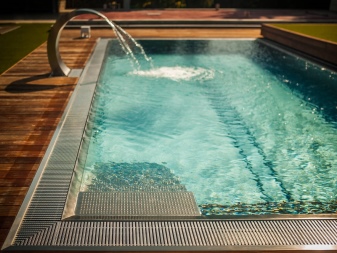
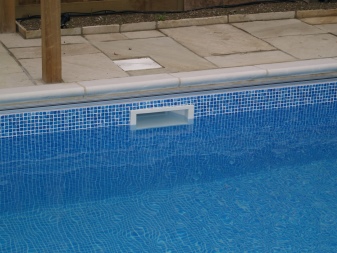
Filter types
Filters are special systems that purify and disinfect pool water. The use of these devices helps to protect bathers from various infections. The quality of cleaning is influenced by the system that is used for this, so the choice of filtering equipment should be done deliberately.
Mechanical
The most popular filters are mechanical. When using them, the process of water purification is quite simple. Once in the filter, the liquid passes through the sand layer, coal, membranes, and after cleaning it from impurities, it is sent back to the pool. The settling of fine litter, bacteria, microscopic organisms that contribute to flowering occurs on the bottom half of the filter.
Mechanical filters can be of different types.
- Sand. This type of filter has a granular structure, it contains quartz, fine gravel. The sand device requires regular flushing.
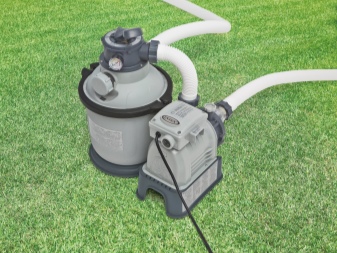

- The cartridge is designed as a baffled system. In this case, the filter element is represented by porous polypropylene, which needs constant flushing. The cartridge filter is characterized by high performance.
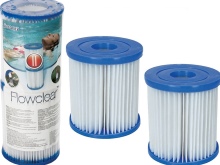

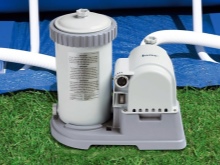
- Diatomaceous. This type of filter is filled with a crushed fraction of marine shells. This device is characterized by a good quality of water purification, as it retains the smallest particles of debris.
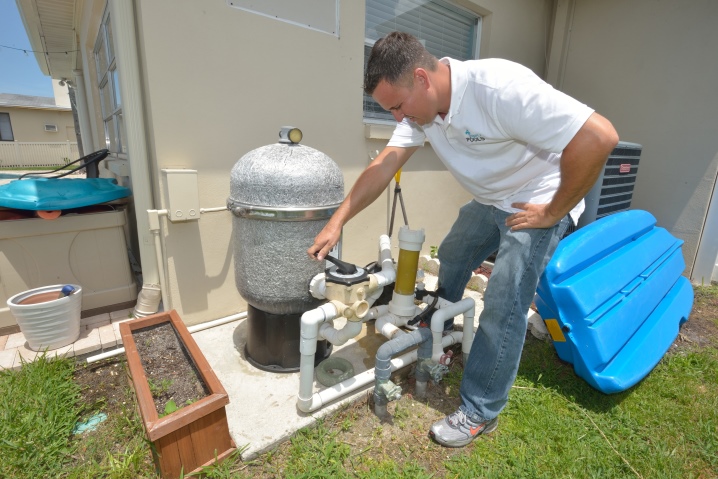
Cleaning the pool liquid using mechanical filters can be carried out without chemicals. These devices are considered the best option for bowls with medium dimensions.

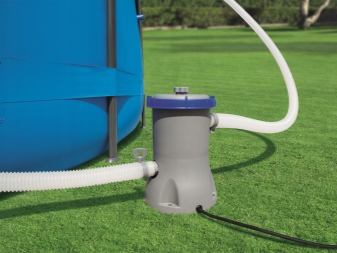
Chemical
Chemical filtration means purifying pool water using reagents. In order for the procedure to be of high quality, a number of activities will need to be performed.
- Use drugs that carry out bacterial cleansing. These include chlorine, bromine, oxygen in the active phase. Chlorine is an excellent disinfectant, but unfortunately it can cause allergic reactions. This effective drug has a rather persistent and not very pleasant smell. In turn, bromine has the same indicators of the effectiveness of water purification in an artificial reservoir, but at the same time it is odorless. The optimal but expensive substance is active oxygen. Provided that the disinfection procedure and dosage are carried out correctly, this reagent is the safest and most effective.
- Use flocculants with some frequency. These drugs are capable of eliminating fat particles and fine pollutants. They should be used even when the purified water remains slightly cloudy.
- Use products that destroy microscopic algae.
- Maintain a neutral pH. Before adding any product to the pool water, it is worth determining its pH level. If necessary, it should be corrected.
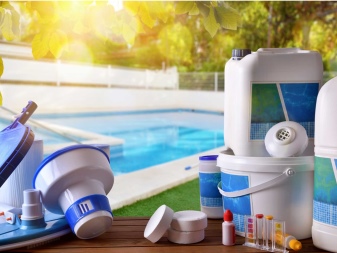
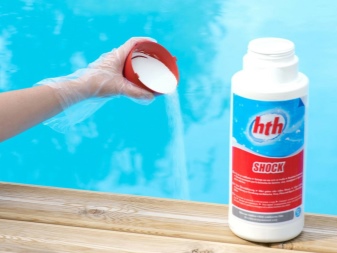
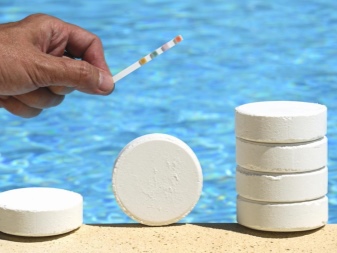

For the primary purification of water in an artificial reservoir, it is worth using a net, a net or a vacuum cleaner. Large debris can be disposed of with these devices. After these procedures, you can start using the reagents.
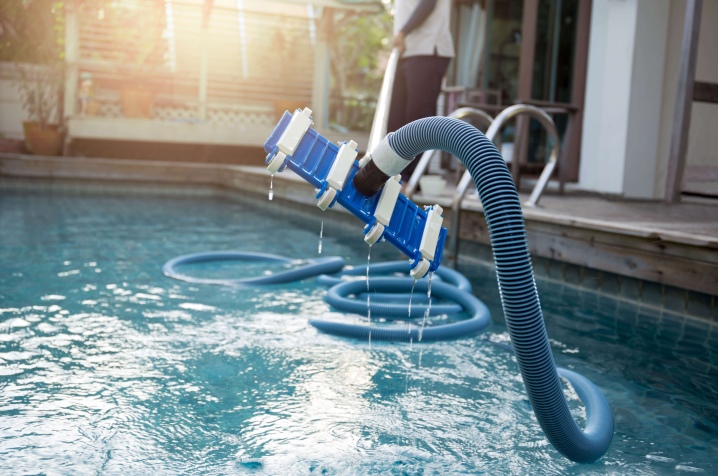
Electrophysical
The use of electrophysical filters has begun to be practiced recently. Basic methods:
- ozonation;
- ultraviolet;
- ionization with silver;
- ionization with cuprum.
Ozonation effectively destroys microorganisms, eliminates unpleasant odors, and also saturates the water with oxygen.
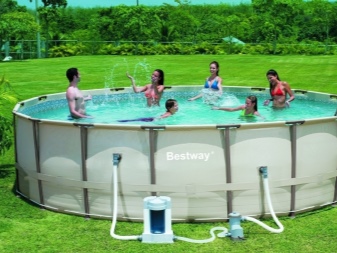
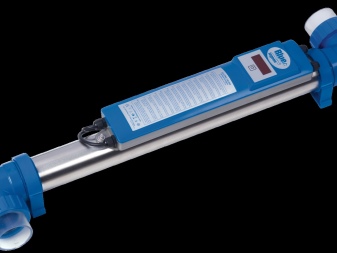
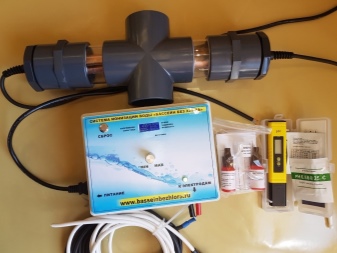
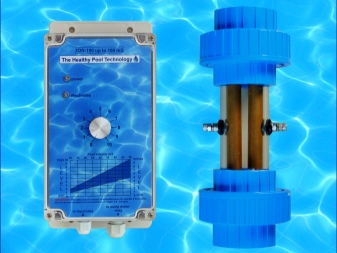
Ultraviolet radiation is an effective option for cleaning fluids in an artificial reservoir, using which you can abandon the use of chemicals. Having installed an ultraviolet filter, it is worth remembering that it functions exclusively in clean water.
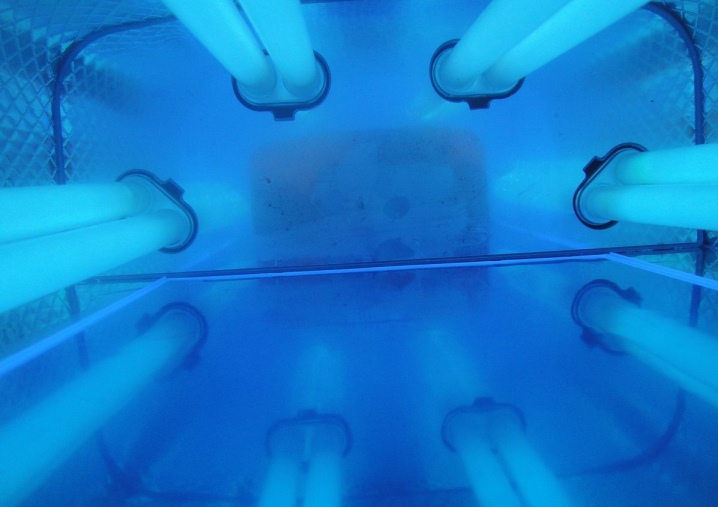
Combined
Combined pool water purification systems have both mechanical and chemical filters. Due to the high cost of these structures, they are most often installed in public places. An example of such a design is a sand filter and a UV unit located on it. There can be a lot of combinations of such devices. Multi-component cleaning procedures ensure the safety of pool water.
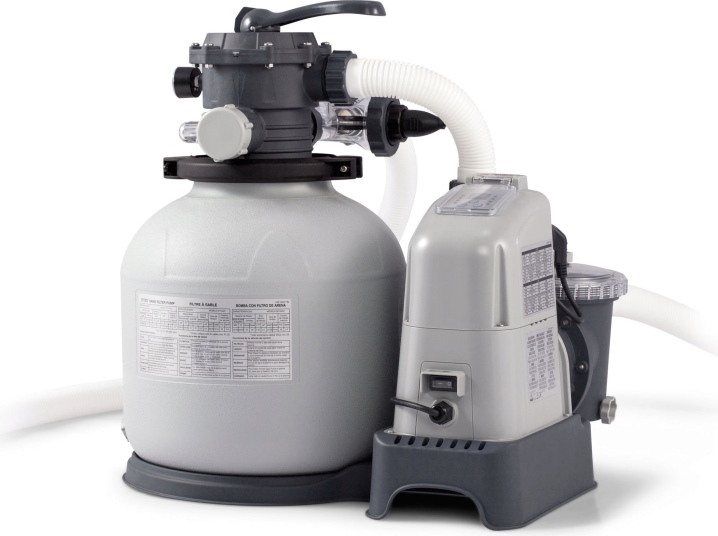
How to choose?
When choosing a filtration system for your own pool, you should take into account its capacity. This indicator is measured in liters or m3 of liquid, which it can clean in 60 minutes of operation. Using modern filters, it is possible to filter out not only large contaminants, but also those that are microscopic in size.
Do not overlook the degree of cleaning of the device, which can be determined by the speed of filtration, as well as the type of filter used. The lower the speed of cleansing, the better the result of the procedure.
The system must pass all the water of an artificial reservoir through itself three times a day.
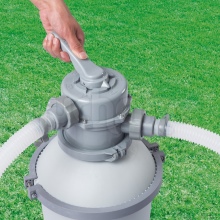
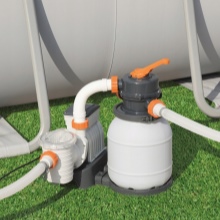
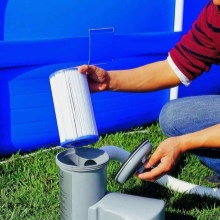
When choosing a pump, it is worth taking into account the dimensions of the pool, as well as the thickness of its walls. At the same time, it is worth remembering that due to an increase in the speed of the unit, the quality of water purification may decrease. Currently, the owner of an artificial reservoir can purchase a set of filters and a purification plant. For this reason, the consumer does not have to select the filter container separately.
To determine the performance of the filter, the volume of liquid in the pool should be multiplied by 2.5 and divided by 10. It is worth choosing a filtration unit for a pool on your territory, taking into account the calculated power.
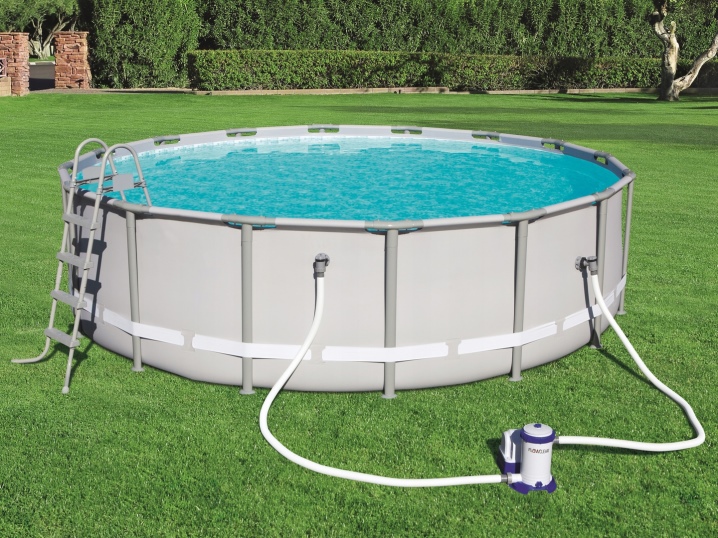
How to do it yourself?
Making a sand filter for filtering water in an artificial reservoir with your own hands is not difficult. In this case, it is worth following a step-by-step scheme. It is better to purchase a filler in the form of sand in a specialized store: it looks like sifted granules with a size of 0.4-0.8 mm. You can also stop your choice on quartz, glass, combined filler, their functionality practically does not differ, the difference is only in the period of use.
The amount of sand embankment is affected by the capacity of the tank. It is not worth filling the container to the top, you need to leave a little space on top. The sand must be poured into the tank and moistened with water for compaction.
In order to assemble a sand filter with your own hands, you will need to have a threaded plastic barrel and a lid. The size of the tank should be selected in accordance with the dimensions of the pool.
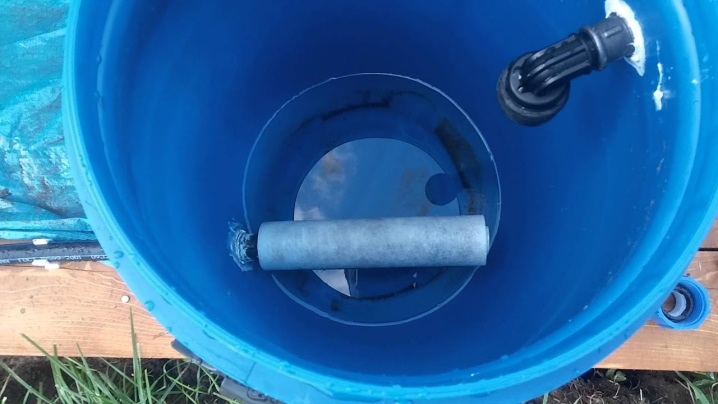
The pipes are made from plastic pipes, and the drainage chamber is made from a bowl and nylon stockings. The assembly of the structure consists of several stages.
- Punching holes under the inlet and outlet. It is worth cutting off 2 pieces of the required length from the plastic tube. The nozzles must be soldered with a soldering iron, and the joints must be treated with a sealant.
- Making a drainage chamber from a plastic bowl. The bottom and sides should be perforated with a drill. Cover the bowl with nylon tights in 2-3 layers. The result should be a fine mesh that will not let the sand through.
- At the end of the inlet pipe on the inside of the barrel, it is worth putting a grid. It is necessary for dividing a powerful water stream into thin jets that will fall on the sand fill.
- It is necessary to pour the previously prepared sand into the tank, and put the hoses on the branch pipe using hot melt glue. The resulting system should be connected to a pump.
- The barrel is filled with water to shrink the sand. Sludge from the bottom must be removed as it can clog the filter.
- A lid with a pressure gauge should be mounted on the barrel. After the engine is started, you need to follow the pressure readings. In case of its constant growth, it will be necessary to rinse the sand filler.
- The pump should be stopped, and the hoses should be swapped with your own hands. After that, the pump should be turned on again, and the dirty liquid should be discharged into the sewer. When the flushing is completed, the hoses can be returned to their original positions, and the filtration system can be started up in standard mode.
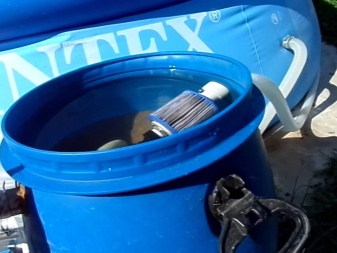
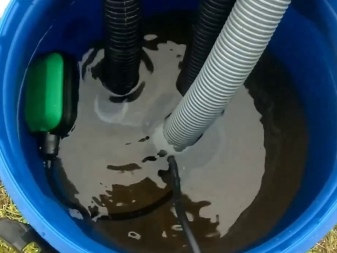
The equipment is connected using flexible hoses. The filter should be installed near the pump behind the pool wall. As mentioned above, there are several connection schemes:
- in front of the pump;
- after him.
In case of self-assembly, you can decide individually where to install the sand filter.
In the case of installation of the structure after the tank, the system should be configured in such a way that the liquid from the bowl is drawn out using a vacuum or flows by gravity.
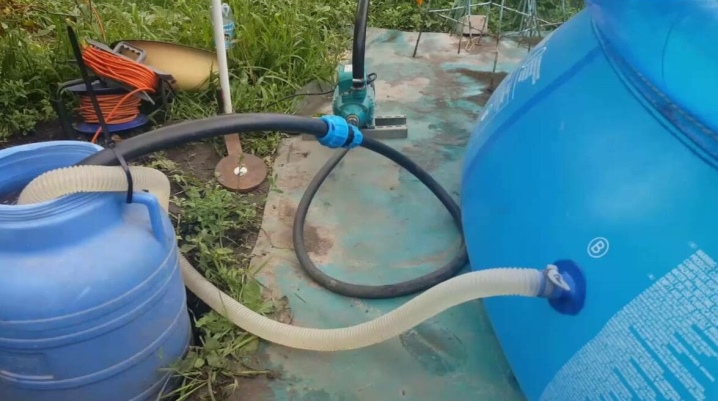
Maintenance and repair
Each pool owner should know how the filtering system works in it, how the water purification mode is carried out, as well as how to connect, preserve, store water filters in winter. All this information is described in the instructions, it also contains the designations with which the user can understand the operation of the device.
As is known, during operation, the filters become clogged, therefore, in order to eliminate dirt from them, it is worth backwashing every 10 days... Another problem with mechanical filters is the accumulation of lime in them, so they should be cleaned of such deposits with the help of specially designed products. For this purpose, special substances are added to the skimmer before backwashing. Replacement of filter sand, quartz should be carried out every few years.
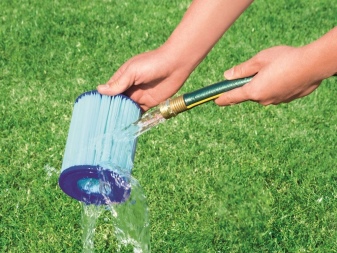

Diatom filters use a lot of liquid, but they do not wash out the soil mixture, so the cartridge needs to be replaced regularly, and this should be done by a specialist.Ultraviolet installations are considered the easiest to maintain - their lamps need to be replaced after their expiration date. It is better to entrust the maintenance and repair of pool filter systems, for example, when you need to glue the body, to professionals, since lack of experience can aggravate the problem.
To replace the filter yourself, perform the following actions:
- turn off the pump;
- unscrew the valves, free the pool from water;
- lift the lid of the tank, remove sand from it;
- clean the nozzles with water;
- fill the tank with new sand.
For maintenance of the pool filter, see the video.
It is worth choosing the type of filtration system for the pool with special attention and exactingness, since the quality of the water depends on this, and, accordingly, the health of the bathers. If the reservoir is small, then a mechanical pump filter will be the best option in this case. For larger bodies of water, a filter system with special devices will be required. In any case, after installing the filter, it is worth using it according to the instructions, as well as performing regular maintenance and repairs as needed.
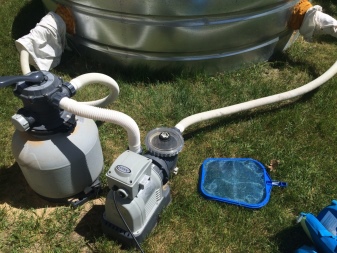




































































The comment was sent successfully.